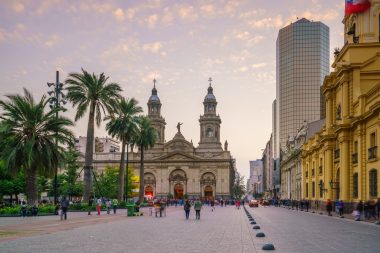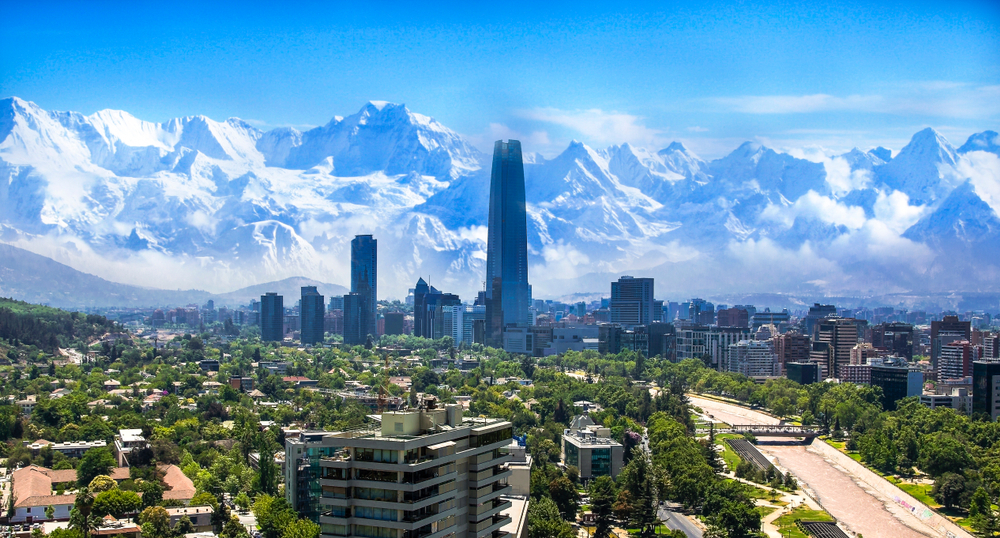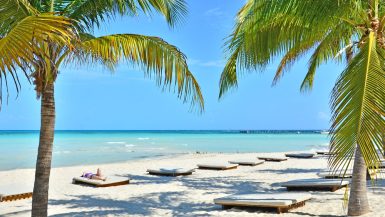Santiago de Chile is located, as the name suggests, in Chile, the 4,200 km long but on average only 180 km wide country on the edge of the Latin American continent. Santiago is the capital of the country and is geographically located right in the middle of Chile.
But the city is not only geographically the center of the nation, but also culturally. No wonder, after all, 40 percent of the country’s population, i.e. about 6 million people, live in and around Santiago. Other Chilean cities are overshadowed by the metropolis, its cultural landscape and cosmopolitanism. What makes Santiago particularly appealing to many Chileans is its location not far from the Pacific Ocean and the fact that the city is surrounded by the peaks of the Andes. From almost every point of the city you can look at snow-capped peaks.
History of Santiago de Chile

Santiago is not only a young city demographically: it was not until 1541 that Pedro de Valdivia founded Santiago. But it seems as if the inhabitants of the city do not care much about preserving their history.
Since two continental plates meet off the coast of Chile, the country is regularly affected by earthquakes and volcanic eruptions. As a result, most traces of the colonial era have long since been erased, and the city is almost reminiscent of Manhattan with its many modern glass skyscrapers. The skyline, as well as the rest of the city, is steadily expanding. However, Santiago’s city planners have done a good job, because Santiago has a well-functioning metro network and impresses with its cleanliness.
Sights
Santiago doesn’t have a long list of sights, but you should plan several days for a visit to soak up the flair of the city. The unique atmosphere of the city lives from the contrast between the magnificent palazzi, noisy and busy street markets, the skyscrapers and the Andes with their snow-capped peaks towering in the background. The bohemian district of Lastarria, with its pubs, art galleries, murals, graffiti and cafés, is a must-see when visiting the city. In addition, no visitor should miss the view from Cerro San Cristóbal, officially called Parque Metropolitano.
With its 722 hectares, the park is the green lung of the city. If you shy away from cycling or climbing on foot, you can also take a mountain railway or gondola to the top. The zoo, the botanical garden and a Japanese garden, among others, are also part of the Cerro, the largest park in the city. Especially for all visitors who are interested in the history of the country or have already done some research, the Palacio de la Moneda is a highlight. It was here that the then President Salvador Allende was overthrown in 1973. Today, the office of the head of state is located here again. Originally, the building was once the country’s national bank. Lovers of the high arts will certainly not go away empty-handed in Santiago: the Centro Gabriela Mistral is named after a Chilean poet who was the first Latin American woman to win a Nobel Prize in Literature. This center of modern art forms trumps almost daily with performances, concerts and installations. A visit to the changing exhibitions on the ground floor is always worthwhile. If you are more interested in ethnology, handicrafts and history, you will find what you are looking for in the Museo Chileno de Arte Precolombino. In addition to pottery, Mayan stone columns and totems of the Mapuche tribe, the largest collection of textiles from the Andes can also be admired here.

The sight that is almost forgotten due to its everyday nature is the Mercado Central, the central market, of the city. The large market halls date back to the 19th century and are filled to the brim with stalls selling the finest fruits, fish and seafood, the freshest meats, breads, pastries and much more. What seems a bit chaotic at first glance is an oasis for gourmets and for all those who like to watch the hustle and bustle of people between the market stalls.
Especially for the young visitors to the city, the Providencia district is usually on the to-do list, because this is where almost all the nightlife in the capital takes place. In the bars and clubs of this now quite affluent district, people often party until the morning. During the day, Providencia also attracts visitors with numerous shopping opportunities. In addition to shopping malls, there are numerous small bookstores and boutiques, which are often even run by local designers who produce in Chile.
Santiago de Chile is undoubtedly worth a visit. Where else in Latin America can you enjoy the advantages of a big city as civilized and safe as here? A few days in the capital help to better understand the mentality, the culture and thus the fascination of the country, without any effort during leisurely walks through parks, boulevards and museums and always with a breathtaking panorama in view.
Information about Santiago de Chile
How high is Santiago de Chile?
Santiago de Chile is located 570 meters above sea level
What language is spoken in Santiago de Chile?
The official language in Chile is Spanish.
When is the best time to travel?
The best time to visit Santiago de Chile is from October to April. Summer temperatures prevail here. However, it also has its charm when snow falls in the Andes in winter (May to September).




